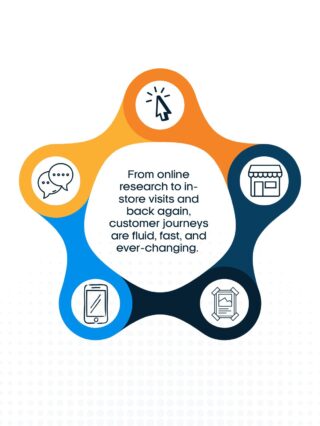Consumer behavior has undergone a transformation during the coronavirus pandemic, and companies with products and services to sell need to alter their marketing plan accordingly if they haven’t already.
But since the channel disruption in media consumption began long before COVID-19 forced people to stay home, marketing experts don’t see a return to the old way of life when the pandemic relents.
That’s why it’s imperative for companies to adopt progressive ideas when it comes to marketing, according to Kimberly Jones, President and CEO of Butler/Till, the Rochester-based marketing agency with a stable of regional and national brands.
“I don’t think the end of COVID will be triggering a turnaround,” Jones said. “We all know the transformation has needed to happen for a really long time. It’s just taken a cataclysmic event to make it happen.”
Indeed, Butler/Till has been guiding clients through the changing landscape. Even as it was becoming apparent that consumer preferences were evolving, some businesses had resisted the need to become more progressive. But with some studies showing a 200 percent increase in online media consumption between March 2019 and March 2020, firms now understand where consumers are lurking.
“Brands that were thinking about a digital transformation have put their digital transformation on steroids,” Jones said. “Before, it was a classic case of not wanting to cannibalize what works for fear you’re going to make a mistake. There was a wait-and-see approach.”
Not anymore. We see our doctor through the computer. We buy groceries online. Amazon brings us the new QLED TV the same day we order it.
So when finding ways to tell a client’s story or make their product or service desirable, an agency needs to develop meaningful content that is either educational or entertaining, Jones said. Butler/Till added 45 employees over the second half of 2020, bringing the workforce to around 200.
But there’s more to an online presence than simply being visible. Butler/Till cautions clients that how consumer information is collected — and then stored — is a critical component to the overall marketing plan.
“There’s a lot of data management and privacy concerns,” Jones said. “How is personal information being used by advertisers and how do you make sure first-party data is secure?”
How many people actually click the “learn more” icon when they’re asked to accept the cookie policy on a webpage? One in five? One in 15? One in 55? Whatever the number, it’s definitely not the majority.
“Consumers don’t realize what they’re signing up for,” Jones said, “and then they wonder why they’re getting bombarded with ads. Or their information is being sold unbeknownst to them. A lot of companies are collecting data, but they don’t know what to do with it.”
Medical companies must be especially vigilant because of privacy concerns with consumer information. Butler/Till’s health care division, Butler/Till Health, serves a variety of clients in the industry.
What should a company do?
“More than anything, it’s not keeping data they don’t need,” Jones said. “You really have to be intentional with the data you collect. Generally speaking, the reason for collecting data has to outweigh the risk.”
The shift in advertising dollars to online will only increase the amount of data a company could collect.
So how does a firm decide how to allot advertising dollars as they tackle a digital campaign more aggressively? Jones believes online now delivers more bang for the buck.
“Our hypotheses is that you can deliver the same medium online that you would normally get on TV for a smaller budget,” Jones said.
That doesn’t mean other traditional media should be ignored. The audience you’re trying to reach will tell you where to spend.
“I don’t think TV will ever be dead, but the way we consume television programming will continue to evolve,” she said. “That allows for creativity.”
And that creativity is, after all, what lures consumers.





